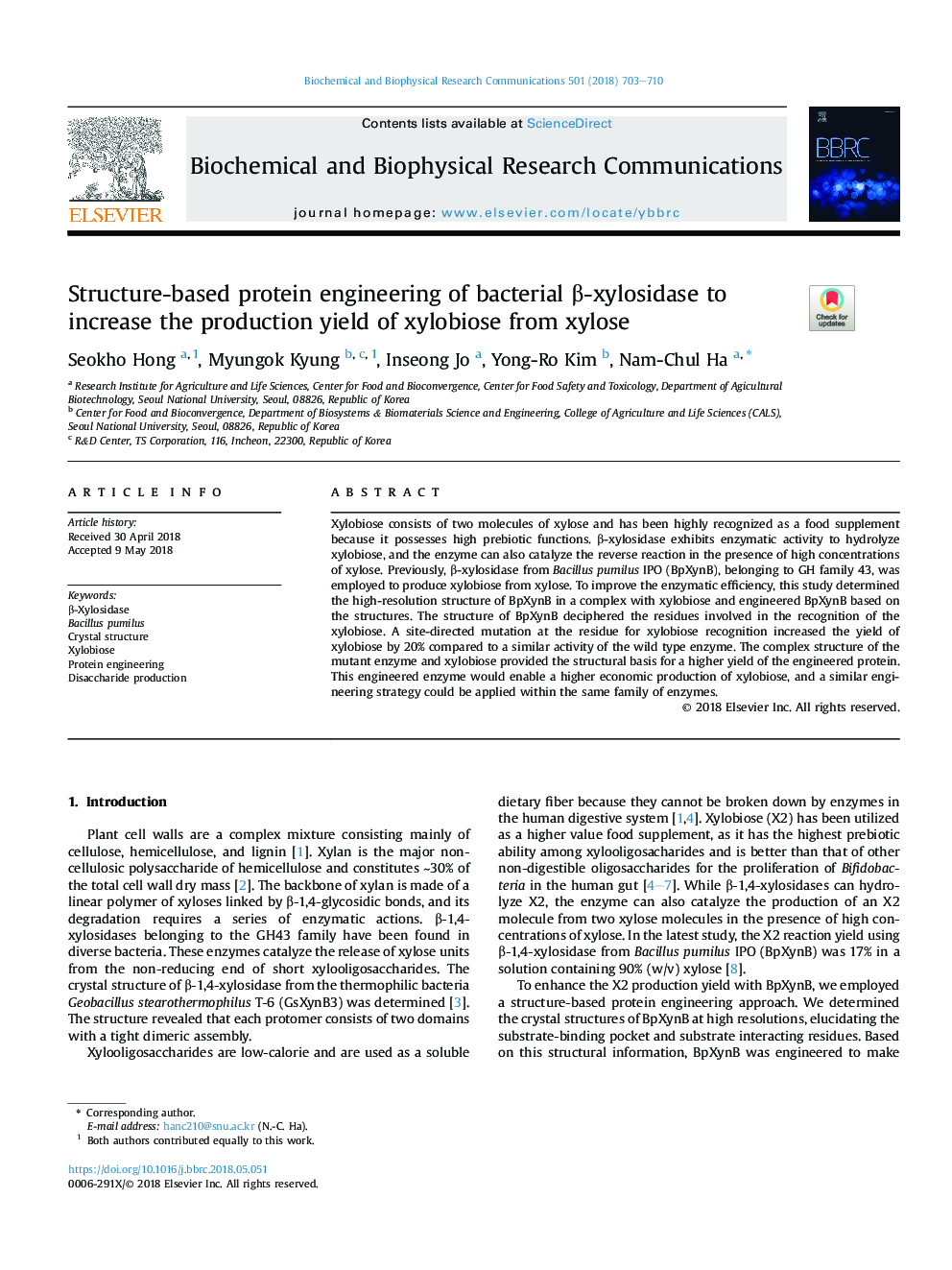| Article ID | Journal | Published Year | Pages | File Type |
|---|---|---|---|---|
| 8292533 | Biochemical and Biophysical Research Communications | 2018 | 8 Pages |
Abstract
Xylobiose consists of two molecules of xylose and has been highly recognized as a food supplement because it possesses high prebiotic functions. β-xylosidase exhibits enzymatic activity to hydrolyze xylobiose, and the enzyme can also catalyze the reverse reaction in the presence of high concentrations of xylose. Previously, β-xylosidase from Bacillus pumilus IPO (BpXynB), belonging to GH family 43, was employed to produce xylobiose from xylose. To improve the enzymatic efficiency, this study determined the high-resolution structure of BpXynB in a complex with xylobiose and engineered BpXynB based on the structures. The structure of BpXynB deciphered the residues involved in the recognition of the xylobiose. A site-directed mutation at the residue for xylobiose recognition increased the yield of xylobiose by 20% compared to a similar activity of the wild type enzyme. The complex structure of the mutant enzyme and xylobiose provided the structural basis for a higher yield of the engineered protein. This engineered enzyme would enable a higher economic production of xylobiose, and a similar engineering strategy could be applied within the same family of enzymes.
Related Topics
Life Sciences
Biochemistry, Genetics and Molecular Biology
Biochemistry
Authors
Seokho Hong, Myungok Kyung, Inseong Jo, Yong-Ro Kim, Nam-Chul Ha,
